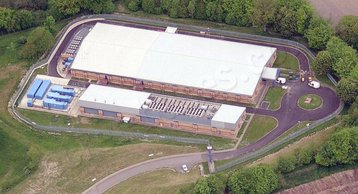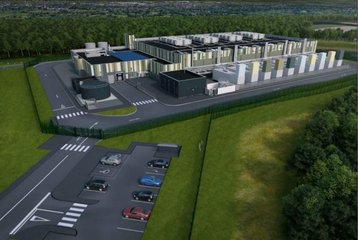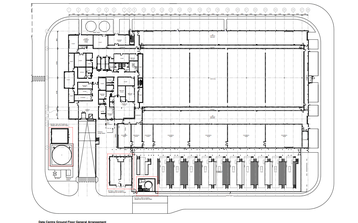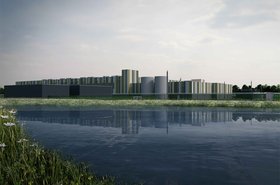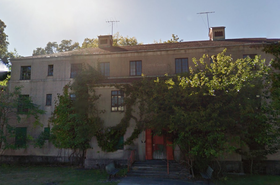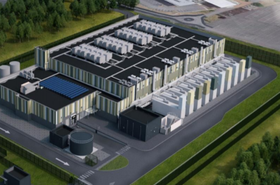A 27MW data center has been proposed on a site near Swindon, currently occupied by two former Hewlett-Packard (HP) data centers, which were switched off in 2020.
The proposal would demolish the two data centers, which have stood since the 1990s, and construct one new facility, with four data halls, beginning in late 2021. With an N+1 redundancy, its 10 3MW diesel backup generators would indicate an overall size of 27MW. The proposal was filed by planning agent RPS of Abingdon, on behalf of Mullhaven Properties LLC of Denver. Mullhaven is a shell company registered through Corporation Service Company, which data center companies often work with to hide their involvement in projects.
There's no immediate indication who the ultimate builder and owner of the data center would be, but the proposals claims on behalf of the eventual operator sound very similar to those Amazon made in a proposal to build data centers on the site of the Didcot A Power Station earlier in 2021.
Military hospital to data center
The 28-acre site, on Brimble Hill between Chiseldon and Wroughton, was part of the grounds of Burderop Park and held a US Air Force hospital during the Second World War, which was then used by the National Health Service as a mental health unit.
In the 1980s, the hospital was demolished and a data center built for the Woolwich Building Society operating under the name NuDelta, according to information on the Secret Bases site. The site was taken over by Barclays Bank in 2000 and then sold to computer maker Compaq, which extended it. Compaq was subsequently bought by Hewlett-Packard, which continued to use two data centers on the site until finally closing them in July 2020.
"Owing to the existing data centres’ age and the technology available when these buildings were implemented, the current data centres are no longer fit for their intended use," says the RPS/Mullhaven planning application. "Their dated designs offer extremely poor performance when considered against the efficiencies of modern equipment and today’s technology."
The application plans to demolish the existing data centers and consolidate them into one building, described as a "National data centre". This would reduce the amount of development and increase the woodland on the site. "Under the proposals, all three buildings will be demolished and replaced with one single data centre constructed in the centre of the. There will be a slight reduction in the footprint of buildings on the site and consolidating the building requires less than half the site for development, allowing for ecological enhancement around the site perimeter."
The application also promises up to 50 new full-time jobs, along with an indirect boost to the local economy.
"Since the site ceased being used as a data centre less than a year ago, these proposals represent no change of use. The replacement of the existing data centre buildings will result in a significantly more energy-efficient building due to modern designs and equipment standards."
Although the ultimate operator of the data center has not been identified it is likely to be a cloud player, and a large one, with several renewable energy projects under its belt. According to the application, it "has a strong focus on sustainability and has programmes in place to reduce its carbon footprint with a commitment to achieve net-zero carbon by 2040."
The application says: "Beyond efficiency, the operator is working to decarbonise the electricity that powers its facilities. The operator purchases new renewable energy by enabling new wind and solar projects across Europe. To date, the operator has announced renewable energy projects in eight European countries, including the UK. The UK projects will generate enough new clean energy to power the equivalent of over 165,000 average UK homes annually. The operator is on a path to meet its global energy consumption with 100 percent renewable energy by 2025."
Amazon Web Services (AWS) has committed to use 100 percent renewable energy by 2025 and to be carbon neutral by 2040.
"The operator has commissioned studies to estimate the efficiency of its infrastructure in comparison to traditional computing and found it to be more than three times as efficient," the application flyer says. AWS paid for a 451 Research and Black & White paper that found "AWS’s infrastructure is 3.6 times more energy efficient than the median of the surveyed US enterprise data centers."
It is also the only hyperscale cloud provider operating to those renewable energy timelines. It has backed renewable energy projects in many countries including the UK, where one Scottish wind farm provides enough power for 46,000 homes.
The Didcot A application must be from AWS, as it mentioned details of that project.
The Burderop application does not list any specific projects, but the environmental promise and the overall wording of the environmental promise in the application make Amazon the most likely operator behind the application.
DCD has reached out to AWS for comment.

